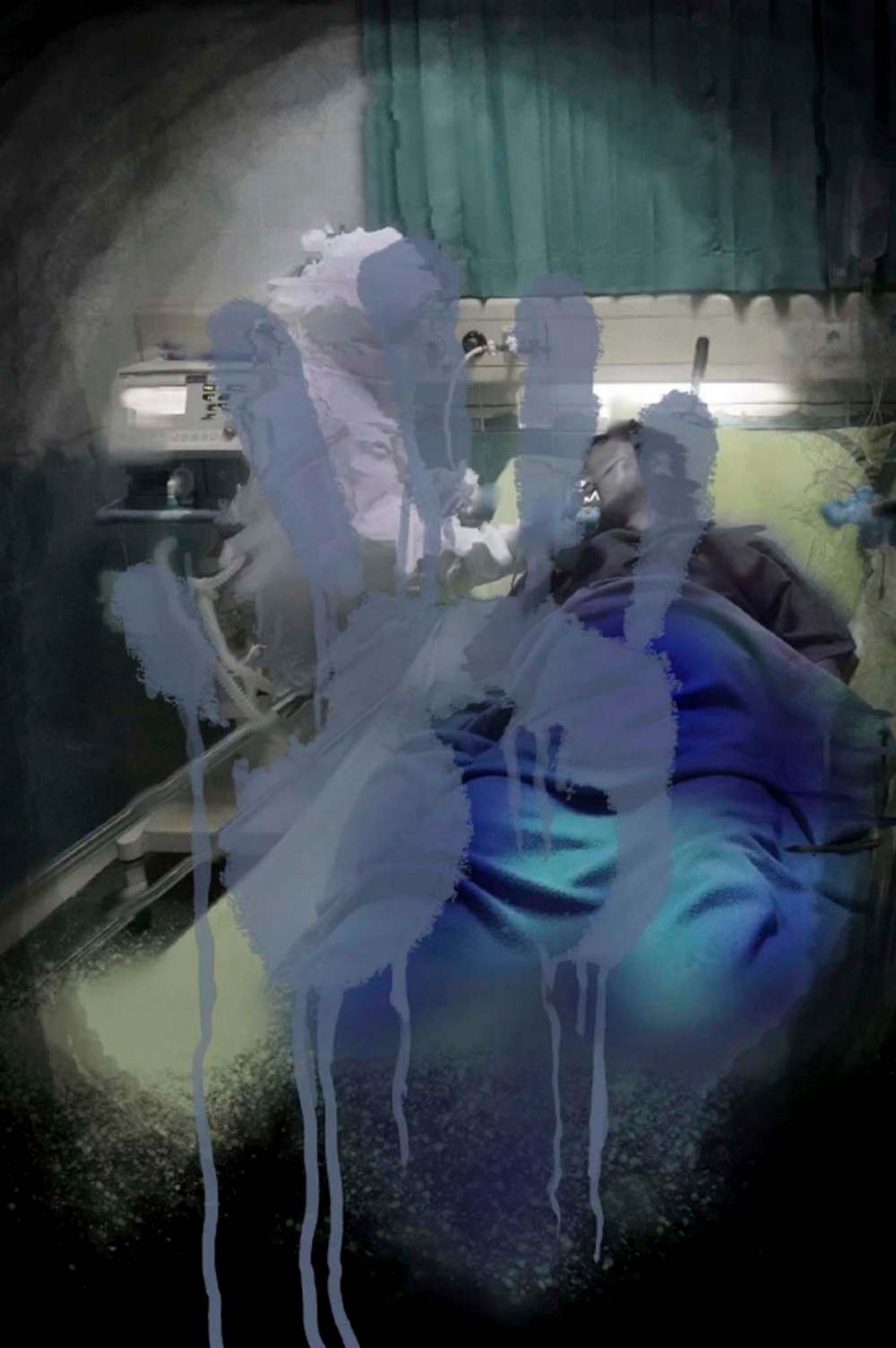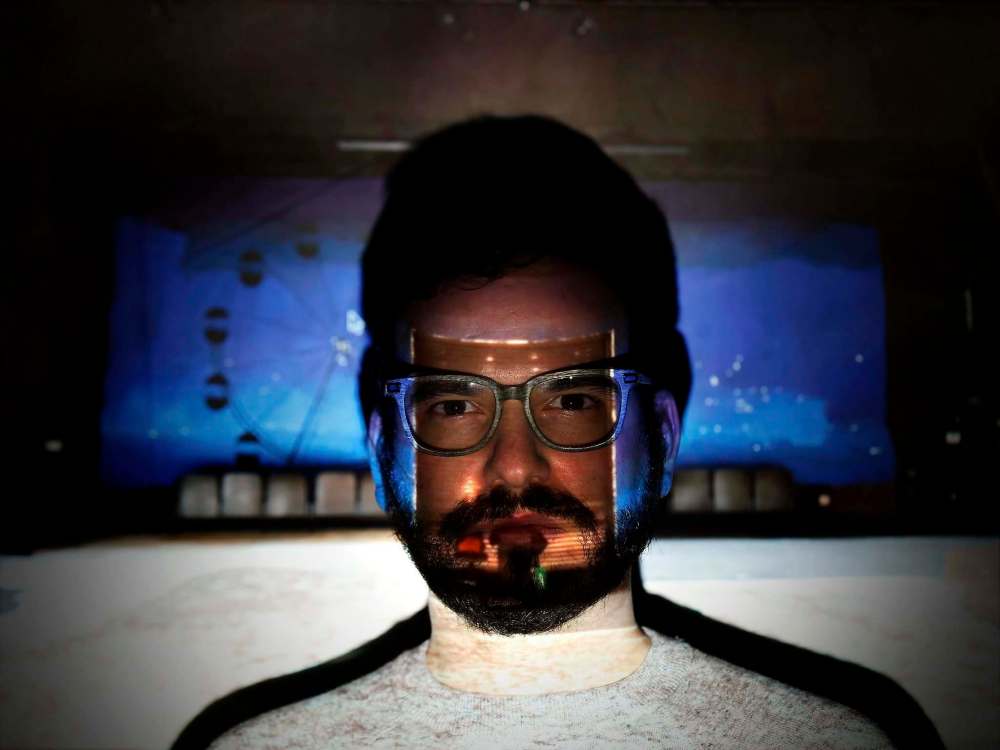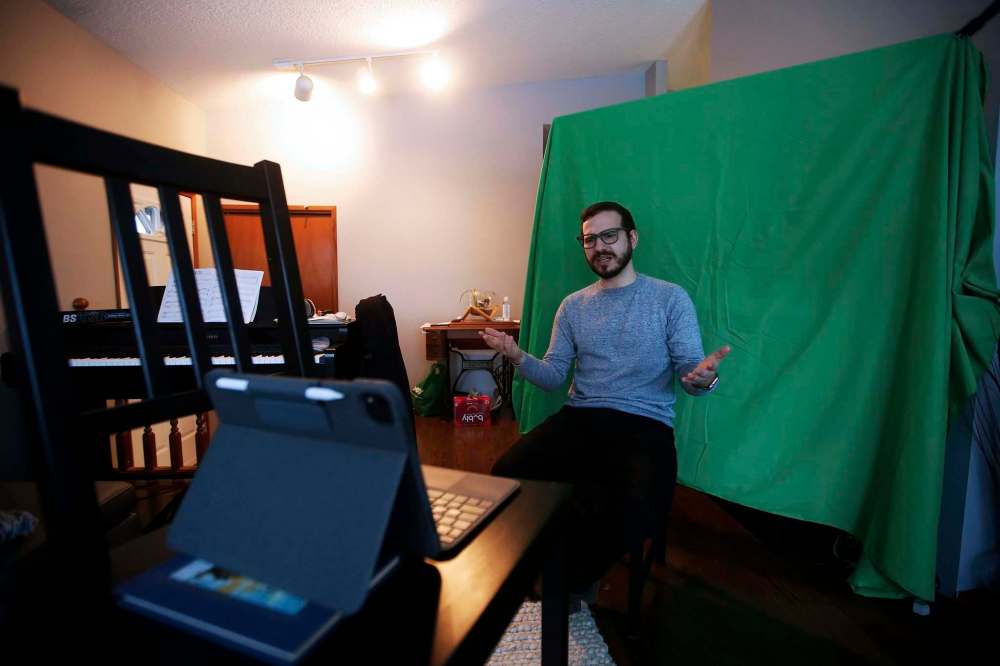Anxiety unmasked Pandemic-focused digital art project explores art's power to express dread, address social issues, convey hope
Read this article for free:
or
Already have an account? Log in here »
To continue reading, please subscribe:
Monthly Digital Subscription
$0 for the first 4 weeks*
- Enjoy unlimited reading on winnipegfreepress.com
- Read the E-Edition, our digital replica newspaper
- Access News Break, our award-winning app
- Play interactive puzzles
*No charge for 4 weeks then price increases to the regular rate of $19.00 plus GST every four weeks. Offer available to new and qualified returning subscribers only. Cancel any time.
Monthly Digital Subscription
$4.75/week*
- Enjoy unlimited reading on winnipegfreepress.com
- Read the E-Edition, our digital replica newspaper
- Access News Break, our award-winning app
- Play interactive puzzles
*Billed as $19 plus GST every four weeks. Cancel any time.
To continue reading, please subscribe:
Add Free Press access to your Brandon Sun subscription for only an additional
$1 for the first 4 weeks*
*Your next subscription payment will increase by $1.00 and you will be charged $16.99 plus GST for four weeks. After four weeks, your payment will increase to $23.99 plus GST every four weeks.
Read unlimited articles for free today:
or
Already have an account? Log in here »
Hey there, time traveller!
This article was published 14/04/2021 (1708 days ago), so information in it may no longer be current.
For many people, living in a pandemic means living in a near-constant state of anxiety.
There’s the doomscrolling, the low-key dread of daily case counts. There are the immediate worries, about loved ones contracting the virus, about keeping ourselves safe, about job loss, about the burnout of front-line workers and teachers, parents and caregivers.
And then there are the macro worries: what will our world look like after this is over? How will our lives be forever altered?
University of Manitoba professor Joanna Black, along with research assistant Sarah Paradis, has been working in collaboration with Pam Patterson and Daniel Payne from the Ontario College of Art and Design University (OCADU) on creative research involving 38 bachelor of education students from the U of M to address all of these stressors and more in COVID-19 Anxiety in the Age of the Anthropocene.
The digital art project, which launched this month, stems from another artistic collaboration among Black, Patterson and Payne called COVID-19 Anxiety: Location, Refuge and Loss.
“We came up with the idea of anxiety because we were so anxiety-ridden,” says Black via Zoom. (Some of those anxieties were personal; Black’s son was working as a professional musician on a cruise line when the pandemic hit and was stuck on a ship for two months.)

For COVID-19 Anxiety in the Age of the Anthropocene, the students from Black’s course, Arts Infusion in the Digital Age, were tasked with harnessing digital technology — which, of course, become of particular importance to society during the pandemic — to create artworks that not only reflect what it’s like to live through a pandemic, but the societal issues the pandemic exposed.
“The power of art is working through ideas, expressing ideas, expressing anxieties, expressing concerns, expressing, also, hope,” Black says. “And underlying all of this is the idea of artistic activism. Not just lying back and just accepting the world as it is, but becoming an active voice and trying to make change.”
The resulting digital artworks — or digiCOVERS — address a wide range of pandemic anxieties, and many of the works are deeply personal.
Amy Cromarty’s Kokume examines grief and virus-as-thief, stealing both her grandmother, who died from COVID-19 in December, and Cromarty’s ability to say goodbye. A grey-blue handprint, dripping paint, presses against the window of an ICU ward. Through the window we see her grandmother in a hospital bed.
In Lilly’s Mask, Suzanne Cobb separates her grandmother’s matryoshka dolls, masking them and ensconcing them in bubbles, to offer a rumination on how our lineage, memories and stories keep our families connected even when we must be apart.
Laurissa Kostiw takes a Dadaist approach to Toxic Positivity, in which an anatomy-textbook brain is haphazardly covered in Band-Aids. All are on view at digicovers.ca, where one will also find a link to the artworks from OCADU students.

Like his fellow classmates involved in this project, Kai Chochinov has been grappling with the anxiety of being both student and teacher in the time of COVID-19. He’s a drama specialist finishing up his last year of education, and has been working inside a high school all year. He’s experienced, first-hand, the anxiety that hums through the halls.
“It almost feels like a dystopia where there’s no students walking around and everyone’s very quiet, there’s not a lot of talking, and you can just sort of tell the emotions are very repressed,” he says.
Drama class, however, has been a port in the storm for both Chochinov and his students.
“I found it very rewarding being in the arts department and creating a place where community and fun can flourish a little bit in creativity,” he says. “And you can almost see the relief in students of easing that anxiety that’s their day-to-day — which has honestly been its own form of anxiety release for me.

It’s no surprise, then, that Chochinov’s digiCOVER, What Will Be Left?, examines the pandemic’s affect on theatre. In the work, a ghostly, faded audience sits in a decaying theatre, facing a a stage that looks as if it’s been lit with ring lights for Zoom.
Chochinov wanted to look at what theatre has become during this time. “Some theatre companies have done pre-recorded plays, but then, OK, it’s filmed in the theatre, and it’s performed straight through like a play, but it’s on film, and there’s camera angles, and close-ups and all these other elements — is that really theatre?”
But he also wanted to look at infrastructure — not just the vacant, darkened theatres, but the people who make theatre, both onstage and in the audience.
“The human infrastructure of theatre is changing,” he says. “I went through a theatre degree and so many of my friends and peers from that have been out of work for over a year. They can’t just be on standby, and a lot of them are talking about finding another job or furthering their education in another direction.
“I hope that there’s enough people left when we can return to full-season theatrical production, especially locally, that we still have that human infrastructure there.”
Sarah Paradis, the research assistant, created the digiCOVERS website. “It kind of reads like Instagram, very visually oriented,” she says via Zoom.
Paradis also created her own artwork about her experience as a teacher as part of this project — a video work entitled [Dis]connection. “I was really interested in exploring kind of the connections and disconnections that we’ve been experiencing in our classrooms, due to our mask-wearing,” she says. She also explored the digital barrier imposed on remote learning.
Other works deal with masks, too. “I was really excited to see a lot of the mask imagery emerge, just because I felt like it was such a prevalent theme and topic that came from COVID,” Paradis says. “And it created anxiety for us too, right? Because it’s like, do our masks work? Are we supposed to wear them? When can we take them off? All these rules that came with it.”

For both students and facilitators, this project has been not just a creative outlet but a way to process their own thoughts and feelings.
“What we’re learning from COVID, and how to express ourselves and express our experiences with COVID through art, is just incredibly powerful,” Paradis says.
jen.zoratti@freepress.mb.ca
Twitter: @JenZoratti

Jen Zoratti is a Winnipeg Free Press columnist and author of the newsletter, NEXT, a weekly look towards a post-pandemic future.
Our newsroom depends on a growing audience of readers to power our journalism. If you are not a paid reader, please consider becoming a subscriber.
Our newsroom depends on its audience of readers to power our journalism. Thank you for your support.







